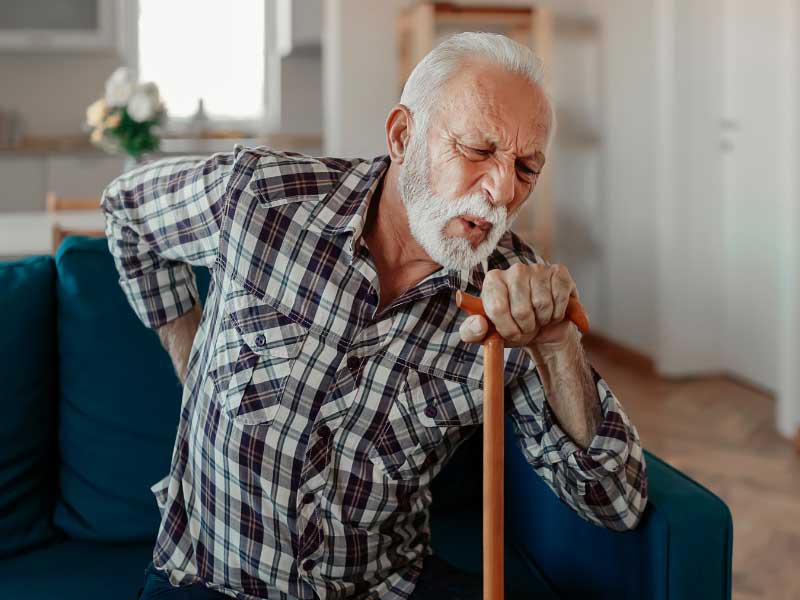02 Jan 2023 | Jennifer
Ways To Manage Lower Back Pain (Lumbar Spine Pain)
The lumbar spine refers to the lower portion of the back. It consists of muscles, ligaments, joints, nerves, and intervertebral discs that provide support and flexibility. It is common for people to experience low back pain at some point in their lives. Chronic back pain affects your movements and reduces your work productivity. Usually, it gets better on its own. A variety of effective treatments are available at Dallas Back Clinics when it doesn't work.
Dallas Back Clinics offer effective treatments for lower back pain. Contact us and also learn ways to manage the pain.

How do you manage lower back pain?
Hot and cold therapy :- Different factors may be the reason for lower back pain such as herniated discs, and osteoarthritis. Back muscle injury may also trigger back pain. You can use hot and cold methods to treat these issues. Apply some ice to the area if you are experiencing lower back pain for the first time. After filling the ice pack with ice cubes, wrap it with a cloth and apply it to the lower back for around 10 minutes. Repeat the procedure for 24 hours to 48 hours.
Apply heat over your lower back after the second day. Wrap the heat pack with a cloth and apply it to the lower back for 10 minutes per session for a day.
Proper posture :- Poor posture is one of the leading causes of back pain. Use cushioned office chairs for sitting for a long time. When you are standing for a long period of time, keep your feet shoulder-width apart and shift your weight from one foot to another.
Redesign your workspace to be more ergonomic. The computer monitor should be an arm’s length away and your laptop's top should be at eye level. Don’t sit too long. Stand up from your chair, stretch, and take regular walks.
Improve your core strength :- Strong back and abdominal muscles are necessary to provide adequate support for your lower back. Lower back pain can be reduced by exercising and strengthening your core.
Yoga, tai chi, and pilates are helpful in strengthening your core. Yoga poses involve slow, controlled motions to stretch the muscles, which eases stress and lowers back tightness. Lying on your stomach while lifting your arms and legs into the flying posture is one exercise that targets your entire upper and lower back.
Maintain a healthy weight :- Losing weight reduces the strain on your lower back. Ask your doctor for guidance on a diet and exercise plan that might be most effective for you.
Change your lifestyle :- Make a note of the activities that make your pain worse and avoid them if possible. Quit smoking. Smokers may have a four times higher risk of developing degenerative disk disease or other spinal issues than non-smokers. Cigarette nicotine can affect healing and make the pain worse. Eat properly and avoid foods that cause inflammation. Increase your diet of fruits and vegetables while decreasing your consumption of processed foods, and sugar.
Get enough sleep :- Your sleeping habits may even help your back condition. To help your body heal from back injuries more quickly, get enough sleep. The pain or other factors that are causing trouble sleeping should be addressed.
Sleep in a comfortable position. Choose a firm pillow for side sleeping. Use a thin cushion or a pillow with more bottom padding if you want to sleep on your back, which gives more support to your neck. The fetal position is recommended if you have a herniated disc. Curling your body in this way can widen the space between your vertebrae.
Rolled towel :- If you're lying down, try placing a rolled towel under your pelvis. Relax your hips over the towel to relieve lower back tension. It is sometimes helpful to wear back braces, especially after surgery or a serious injury.
Stay active :- Laying down for several hours can cause pain and slow your recovery. Being sedentary makes the muscles surrounding the spine and the back weak. Keep moving without straining your back. Walk daily, if possible. Pain signals can be minimized or ignored through meditation and controlled breathing. Do activities that make you happy. Cognitive behavioral therapy makes you look at your pain differently or you can learn ways to manage it.
Therapies :- A spine doctor or a physical therapist can treat back pain by retraining your posture. A therapist will recommend a few stretches or exercises for your back pain. Physical therapy for chronic pain includes :-
- Retraining your posture.
- Evaluating the tolerance level.
- Stretching and exercises.
- Core strengthening.
A variety of alternative therapies could be beneficial for reducing low back pain.
- Acupuncture in which hair-thin sterilized needles are used to release blocked energy.
- Therapeutic massage relaxes spine muscles.
Medications :- Non-prescription medicines are helpful for stiffness and muscle aches. Nonsteroidal anti-inflammatory drugs (NSAIDs) such as aspirin, ibuprofen, naproxen, and acetaminophen are two main types of over-the-counter options.


 Telehealth Visits Available
Telehealth Visits Available
